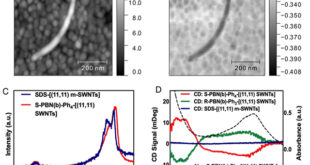Significance Statement
Effective energy conversion is crucial in developing a sustainable society. Chemical energy can be converted into electricity in the fuel cells system with high efficiency, where hydrogen is oxidized at the anode (hydrogen oxidation reaction; HOR) and oxygen is reduced at the cathode (oxygen reduction reaction; ORR). This reaction, forming H2O from H2 and O2, is exothermic, where the chemical energy stored in the reactant can be released as electricity. Generally, parameters determining the efficiency of electrochemical cell, including fuel cells and electrolysis, are (1) required potential to reach substantial reaction rate (kinetic overpotential), (2) potential loss induced by charged species migration in the cell (ohmic potential loss) and (3) additionally required potential by a concentration gradient near the electrode surface (concentration overpotential).
In the field of electrocatalysis, the active catalysts for these reactions have been explored to reduce the kinetic overpotential, especially for the ORR that is a bottle-neck of the fuel cell technology. Historically, the HOR and ORR have been intensively investigated at extremely alkaline/acidic pH levels, which are kinetically favored. Under such conditions, however, the harsh operating environment requires highly stable catalyst materials and operation plant.
Recently, more attentions have been given to electrochemistry at near-neutral pH levels using buffered solutions, where comparable kinetics is attained compared with extreme-pH conditions. At near-neutral pH, in the absence of buffered species (e.g., phosphate, carbonate and borate), the water molecule has to be involved in the HOR/ORR to achieve a substantial reaction rate due to lack of hydronium and hydroxide ions. The overall performances under such conditions are much inferior to those at acidic and alkaline pH. On the contrary, the presence of buffered species functions to maintain the local pH near the surface of electrodes, resulting in drastically improved surface kinetics.
In any cases, usage of electrolyte solutions (supporting electrolyte) is effective in the electrochemical reactions to reduce the ohmic potential loss. Typically, 0.1 – 0.5 mol L−1 of salts are added to the electrochemical cells. Under highly acidic/alkaline conditions, simple solutions, e.g., sulfuric acid or potassium hydroxide, serve as a supporting electrolyte due to high mobility and activity of hydronium and hydroxide ions. Under buffered near-neutral pH conditions (pH 4 – 10), however, a substantial quantity of salts is needed to obtain a reasonable electrolyte conductivity. Also from the viewpoint of buffering capacity, highly concentrated solution is favored for buffered near-neutral pH systems.
As demonstrated in the article, with increasing solute concentration at near-neutral pH, the concentration overpotential becomes problematic for the HOR/ORR to achieve substantial current density. The properties of water have been adopted in most of the studies to describe the mass transport phenomena in the electrochemical cells even under near-neutral pH conditions. However, in buffered electrolyte solutions, the water properties have been revealed not to be applicable anymore. The electrolyte nature (the kinematic viscosity of the solution, diffusion coefficient and solubility of gases) are drastically altered by adding salts in the cell under buffered near-neutral conditions.
The significance of electrolyte properties, highlighted in the article, has been overlooked in many studies. The electrolyte properties are crucial not only for the ORR/HOR but also for other electrochemical reactions including the hydrogen evolution reaction and oxygen evolution reaction for water splitting. Indeed, recently some literature describes “unusual catalysis” affected by cation and anions in the solution. In the context of the current study, most likely the electrolyte identity induces apparent alteration of the electrochemical performances. For the study on the H2/O2 aqueous electrochemistry, the concentration and identity of electrolyte have to be chosen with great care to attain high performances as well as to address surface kinetics properly.
Journal Reference
Journal of Power Sources, Volume 287, 2015, Pages 465–471.
Tatsuya Shinagawa, Kazuhiro Takanabe,
Division of Physical Sciences and Engineering, KAUST Catalysis Center (KCC), King Abdullah University of Science and Technology (KAUST), 4700 KAUST, Thuwal, 23955-6900, Saudi Arabia
Abstract
To maintain local pH levels near the electrode during electrochemical reactions, the use of buffer solutions is effective. Nevertheless, the critical effects of the buffer concentration on electrocatalytic performances have not been discussed in detail. In this study, two fundamental electrochemical reactions, oxygen reduction reaction (ORR) and hydrogen oxidation reaction (HOR), on a platinum rotating disk electrode are chosen as model gas-related aqueous electrochemical reactions at various phosphate concentrations. Our detailed investigations revealed that the kinetic and limiting diffusion current densities for both the ORR and HOR logarithmically decrease with increasing solute concentration . To clarify the physical aspects of this phenomenon, the electrolyte characteristics are addressed: with increasing phosphate concentration, the gas solubility decrease, the kinematic viscosity of the solution increase and the diffusion coefficient of the dissolved gases decrease. The simulated limiting diffusion currents using the aforementioned parameters match the measured ones very well , accurately describing the consequences of the electrolyte concentration. These alterations of the electrolyte properties associated with the solute concentration are universally applicable to other aqueous gas-related electrochemical reactions because the currents are purely determined by mass transfer of the dissolved gases.
Go To Journal of Power Sourceshttp://www.sciencedirect.com/science/article/pii/S037877531500748X
 Advances in Engineering Advances in Engineering features breaking research judged by Advances in Engineering advisory team to be of key importance in the Engineering field. Papers are selected from over 10,000 published each week from most peer reviewed journals.
Advances in Engineering Advances in Engineering features breaking research judged by Advances in Engineering advisory team to be of key importance in the Engineering field. Papers are selected from over 10,000 published each week from most peer reviewed journals.



